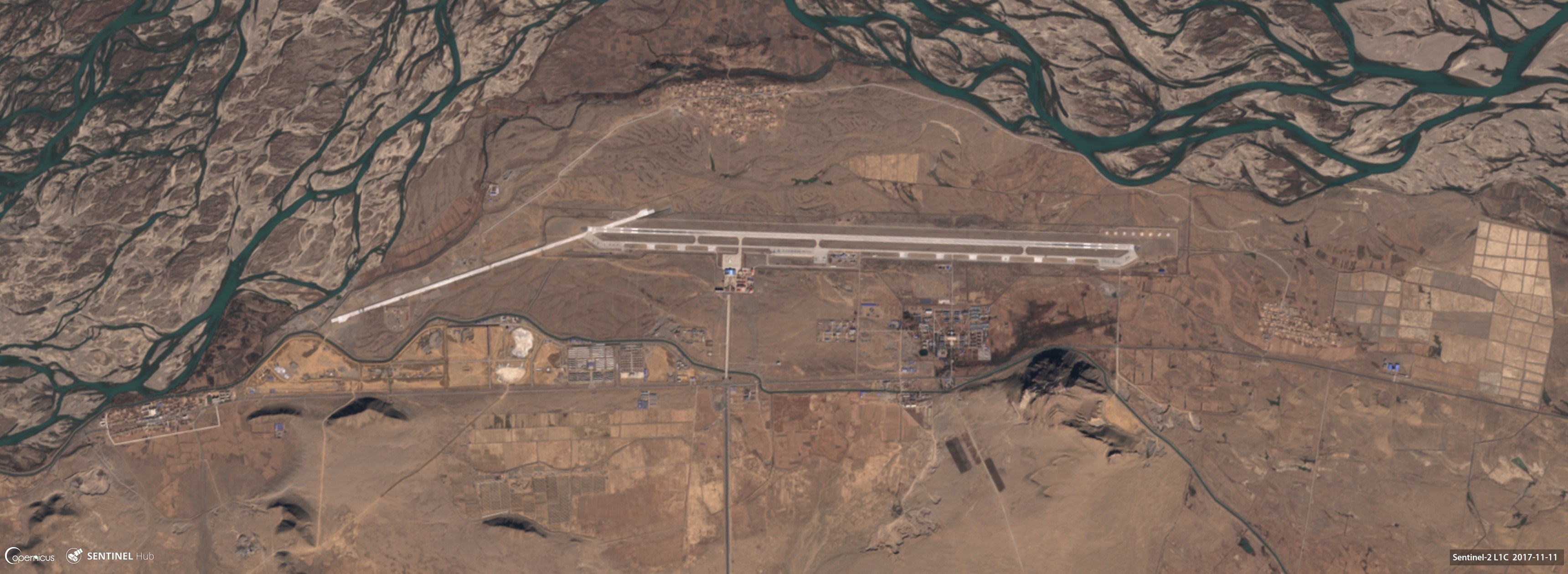China’s Shigatse Gets New Infrastructure
This article appeared on Offiziere.ch (27 November 2017)
Sentinel 2 imagery captured on 11 November 2017 shows continued progress on a new runway under construction at Shigatse. Initial clearing and leveling activity began in August 2017 for the now 3,000 meter long runway, (visible to the west in the imagery above). The level of new infrastructure activity suggests that Shigatse will be able to host a larger more capable force near the contentious border with India.
In recent months, China has deployed increasing rotations of CAC J-10, SAC J-11, and XAC JH-7 aircraft as well as MI-17-171 Hip and KJ-500 AWAC to the airport. In support, imagery shows eight new helicopter hardstands constructed on the northeast section of the airfield and nine new parking aprons, measuring approximately 3,000 square meters each, built along the parallel taxiway. Additional construction activity is also noted near the airfield’s surface to air missile site.
To date, the west alert ramp near the new runway hosts up to three Guizhou Aircraft Corporation Xianglong “Soar Dragon” high-altitude, long endurance UAV. The China Daily reported in December 2016 that they would enter service soon. They arrived at the airbase in early August not long after China threatened military action to remove Indian troops from contested Bhutanese territory. A single CH-4, previously co-located on the ramp, arrived prior to the “Soar Dragon” but has since departed.
In an effort to downplay the recent tensions, Indian Air Chief Marshal B.S. Dhanoa, the Chief of Air Staff, remarked in September that Chinese airfields in Tibet lack requisite military infrastructure to carry out offensive operations. However, the two Chinese airfields closest to the Doklam standoff, Shigatse and Gonggar, both have weapons storage areas and Gonggar has a sizable above ground POL area. Both airfields continue to feature expanded infrastructure.
Bottom Line: China continues to develop capabilities in the Tibet Autonomous Region to support increased combat readiness and the means of putting additional pressure on neighboring India.



